Abstract
STUDY OBJECTIVE: The aim was to investigate the characteristics of non-responders to an invitation to attend a health examination. DESIGN: Taking advantage of an ongoing study of obesity, this was a survey of a cohort of severely obese men, with a randomly selected control group. PARTICIPANTS: The participants were draftees to the compulsory Danish military draft board examination between 1943 and 1977. Among 362,200 draftees, 1940 were identified as severely obese (body mass index greater than or equal to 31 kg/m2). A comparison group of 1801 subjects was randomly drawn from the remaining population. During the period 1981-3 those still alive and living in the same region (1651 obese, 1504 control) were invited to a health examination. MEASUREMENTS AND MAIN RESULTS: The examination was attended by 964 obese (58%) and 1134 controls (75%). In both groups an increasing response rate was associated with decreasing body mass index, and increasing intelligence test score, educational level, current social class, age (up to 50 years) and proximity of residence. Logistic regression analysis showed that all these variables had independent effects on response rate. Frequency and duration of hospital admissions during the period 1977-82 did not differ among responders and non-responders in either group. CONCLUSION: Response rates in health surveys are strongly influenced by degree of fatness, intelligence, educational level, social class, age, and proximity of residence.
Full text
PDF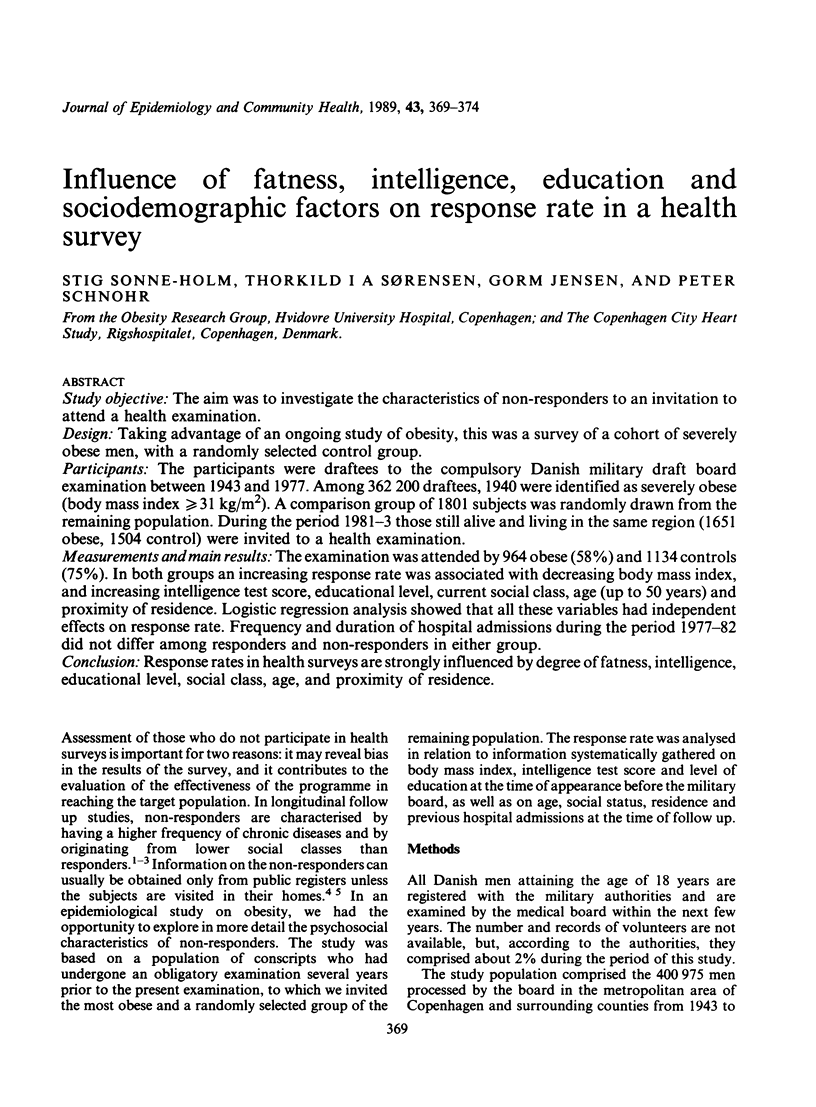
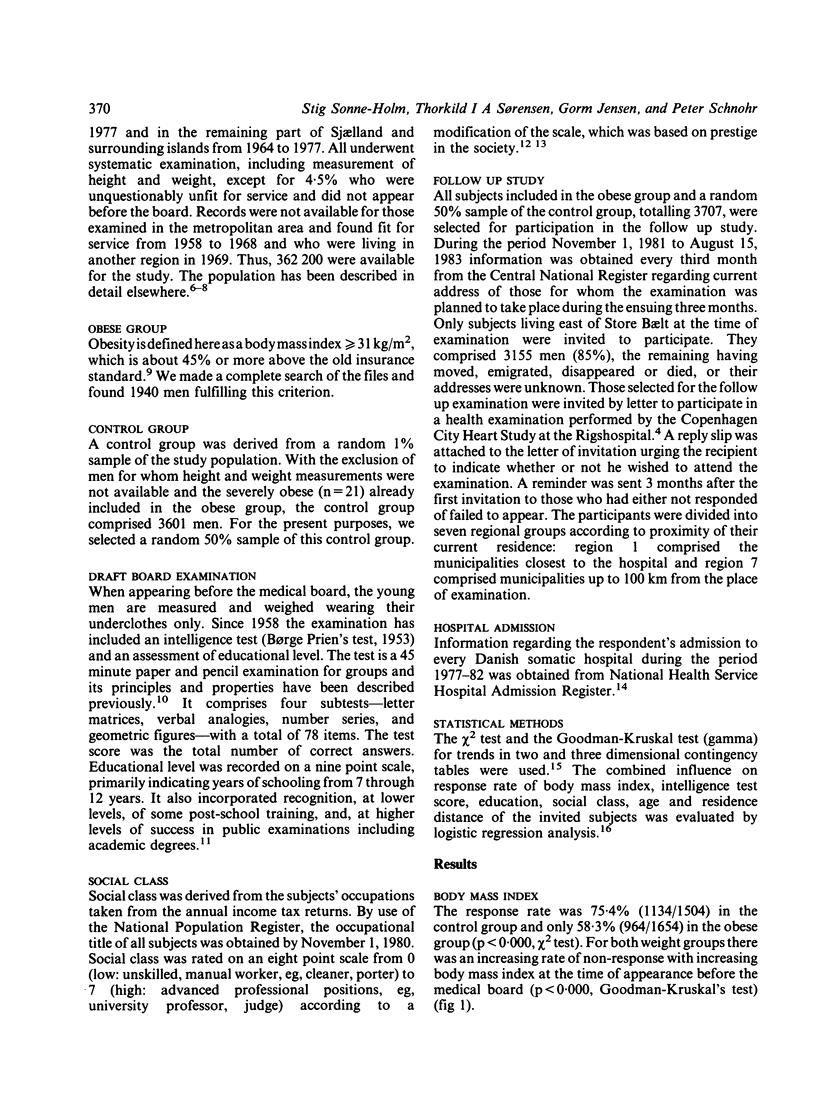
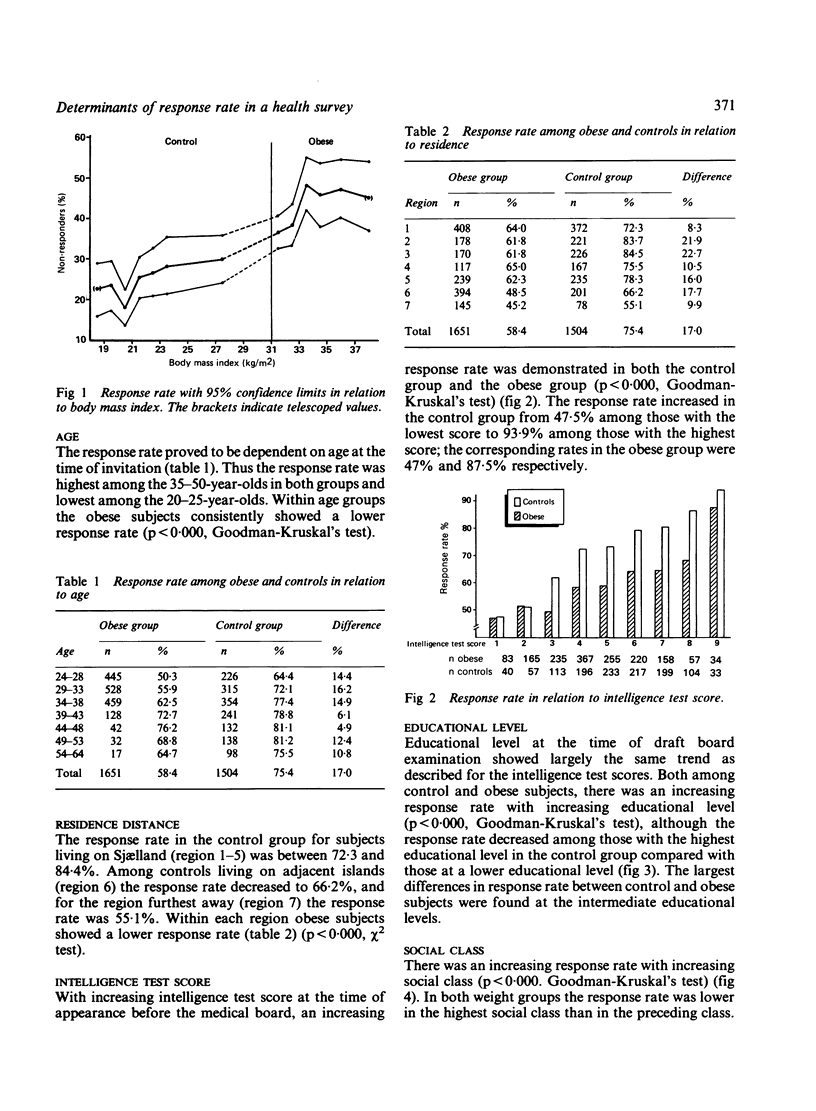
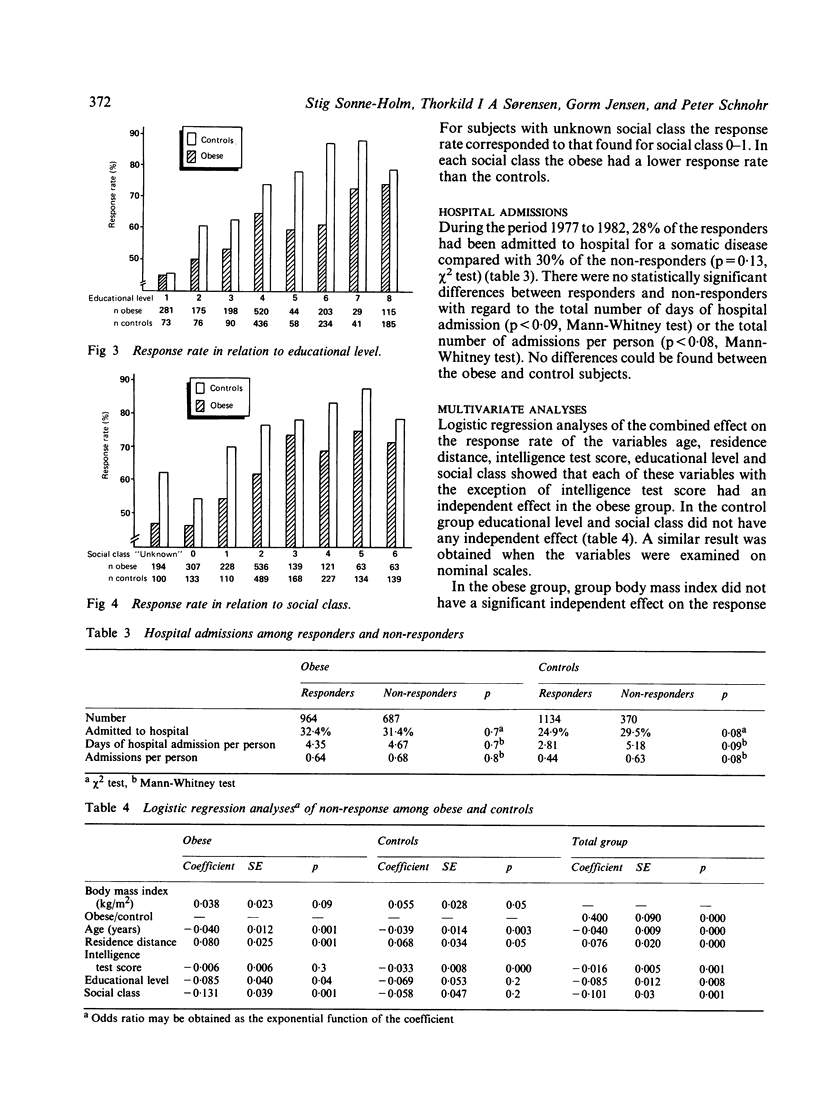
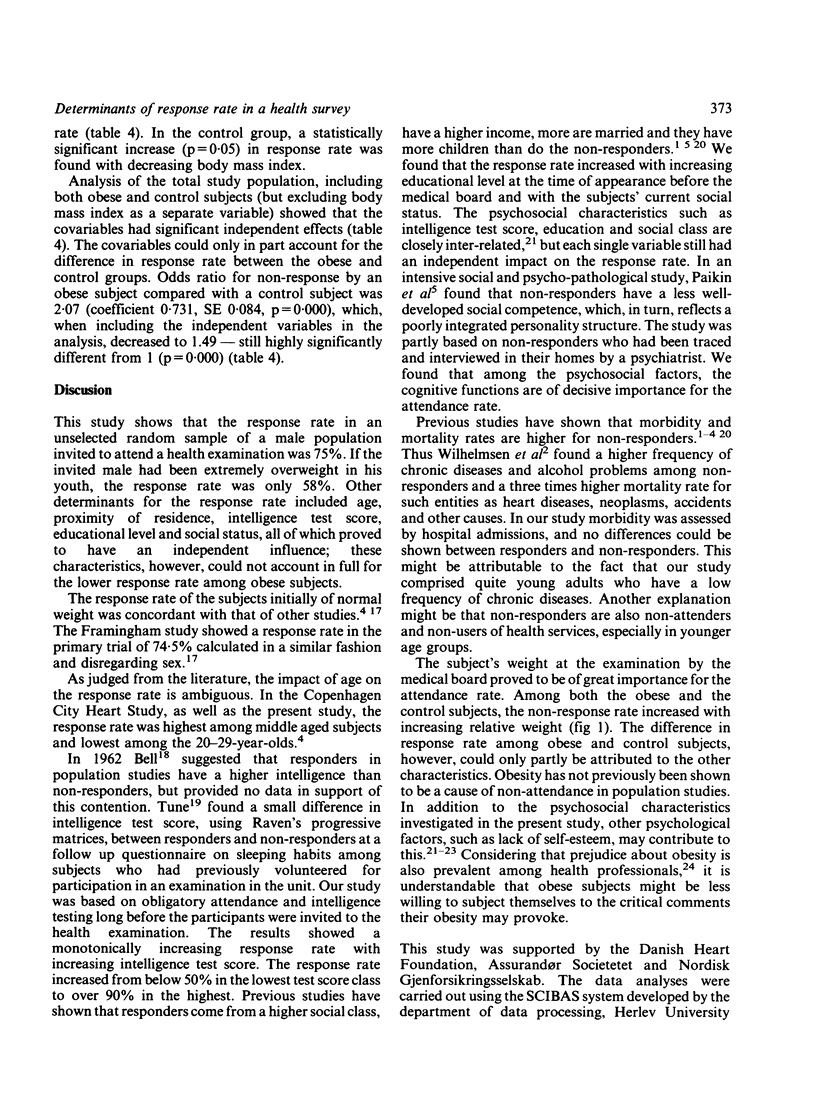
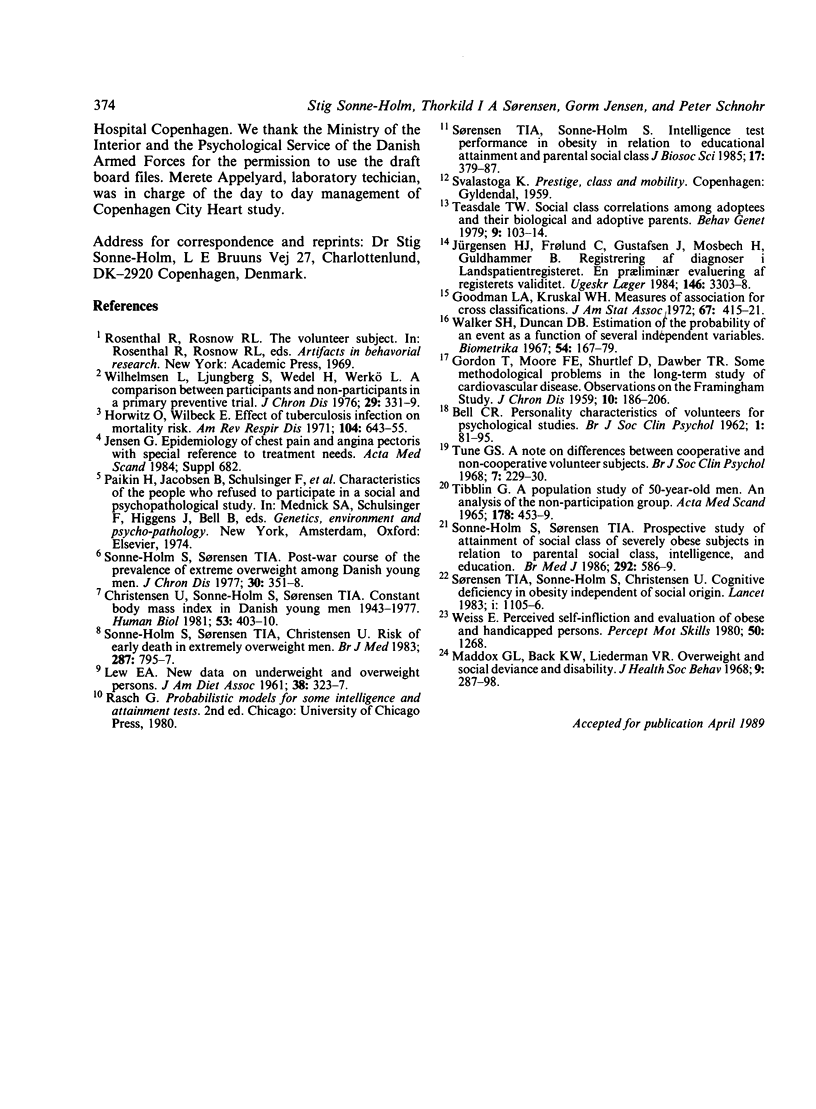
Selected References
These references are in PubMed. This may not be the complete list of references from this article.
- Christensen U., Sonne-Holm S., Sørensen T. I. Constant median body mass index of Danish young men, 1943-1977. Hum Biol. 1981 Sep;53(3):403–410. [PubMed] [Google Scholar]
- Horwitz O., Wilbek E. Effect of tuberculous infection on mortality risk. Am Rev Respir Dis. 1971 Nov;104(5):643–655. doi: 10.1164/arrd.1971.104.5.643. [DOI] [PubMed] [Google Scholar]
- Jürgensen H. J., Frølund C., Gustafsen J., Mosbech H., Guldhammer B. Registrering af diagnoser i landspatientregisteret. En praeliminaer evaluering af registerets validitet. Ugeskr Laeger. 1984 Oct 22;146(43):3303–3308. [PubMed] [Google Scholar]
- LEW E. A. New data on underweight and overweight persons. J Am Diet Assoc. 1961 Apr;38:323–327. [PubMed] [Google Scholar]
- Maddox G. L., Back K. W., Liederman W. R. Overweight as social deviance and disability. J Health Soc Behav. 1968 Dec;9(4):287–298. [PubMed] [Google Scholar]
- Sonne-Holm S., Sorensen T. I. Post-war course of the prevalence of extreme overweight among Danish young men. J Chronic Dis. 1977 Jun;30(6):351–358. doi: 10.1016/0021-9681(77)90029-7. [DOI] [PubMed] [Google Scholar]
- Sonne-Holm S., Sørensen T. I., Christensen U. Risk of early death in extremely overweight young men. Br Med J (Clin Res Ed) 1983 Sep 17;287(6395):795–797. doi: 10.1136/bmj.287.6395.795. [DOI] [PMC free article] [PubMed] [Google Scholar]
- Sonne-Holm S., Sørensen T. I. Prospective study of attainment of social class of severely obese subjects in relation to parental social class, intelligence, and education. Br Med J (Clin Res Ed) 1986 Mar 1;292(6520):586–589. doi: 10.1136/bmj.292.6520.586. [DOI] [PMC free article] [PubMed] [Google Scholar]
- Sørensen T. I., Sonne-Holm S., Christensen U. Cognitive deficiency in obesity independent of social origin. Lancet. 1983 May 14;1(8333):1105–1106. doi: 10.1016/s0140-6736(83)91940-2. [DOI] [PubMed] [Google Scholar]
- Sørensen T. I., Sonne-Holm S. Intelligence test performance in obesity in relation to educational attainment and parental social class. J Biosoc Sci. 1985 Oct;17(4):379–387. doi: 10.1017/s002193200001590x. [DOI] [PubMed] [Google Scholar]
- Teasdale T. W. Social class correlations among adoptees and their biological and adoptive parents. Behav Genet. 1979 Mar;9(2):103–114. doi: 10.1007/BF01074329. [DOI] [PubMed] [Google Scholar]
- Tibblin G. A population study of 50-year-old men. An analysis of the non-participation group. Acta Med Scand. 1965 Oct;178(4):453–459. doi: 10.1111/j.0954-6820.1965.tb04290.x. [DOI] [PubMed] [Google Scholar]
- Walker S. H., Duncan D. B. Estimation of the probability of an event as a function of several independent variables. Biometrika. 1967 Jun;54(1):167–179. [PubMed] [Google Scholar]
- Weiss E. Perceived self-infliction and evaluation of obese and handicapped persons. Percept Mot Skills. 1980 Jun;50(3 Pt 2):1268–1268. doi: 10.2466/pms.1980.50.3c.1268. [DOI] [PubMed] [Google Scholar]
- Wilhelmsen L., Ljungberg S., Wedel H., Werkö L. A comparison between participants and non-participants in a primary preventive trial. J Chronic Dis. 1976 May;29(5):331–339. doi: 10.1016/0021-9681(76)90093-x. [DOI] [PubMed] [Google Scholar]


